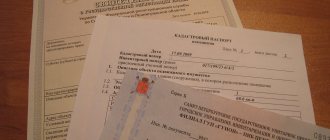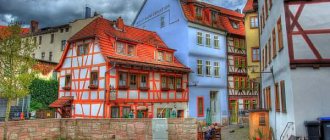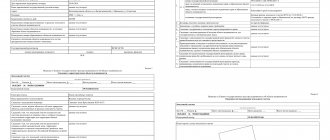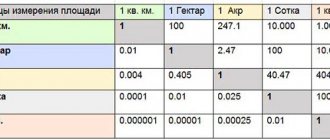What happened before the numbers?
The rather scanty information about the address system in ancient times indicates that it was based on the name.
The name of the house was given by the owner. Until the beginning of the Middle Ages, there was no need to give the exact address of the house. Most social relations of that time were based on personal acquaintances: everyone knew each other and it would not have been difficult to find the house of Gaius Livy even in the capital of the ancient Roman Empire. It was enough to know the name of his house and its approximate location (central area or outskirts).
But over time, this knowledge turns out to be insufficient: if we find ourselves in Vienna in the 18th century, the task of finding the right house with the name “Golden Eagle” will be almost impossible. At least very difficult, since in the center there are 6 houses with that name, and on the outskirts there are as many as 23. We don’t have any other initial data yet.
What determines the numbering order?
Issues of accounting for the housing stock, establishing the procedure for assigning addresses to houses and numbering their entrances and apartments are the responsibility of local governments.
Each city has adopted relevant acts (decrees) that determine the numbering order in a given municipality.
As a general rule, the report of entrance and apartment numbers from left to right is accepted. In this case, arbitrary numbering is not allowed.
Information about established numbers must be placed on signs.
Freedom, equality, serial number
The 18th century is the era of Enlightenment and enlightened absolutism in Europe. Rationalism and free-thinking lead to changes in relationships between people. Fundamental human rights and freedoms are proclaimed, the power of the bureaucratic machine grows, and the power of the old aristocracy fluctuates. Further weakening its position, the state (according to the teachings of Enlightenment philosophers, the source of progress) begins to assign numbers to houses. Thus, the building becomes, as it were, separated from its owner.
It is unknown where house numbering similar to modern ones first appeared. Some sources point to Liverpool and 1773, others to the Jewish quarter in Prague in 1727, others to Paris in the period from 1724 to 1728. And in Edward Hutton's book “A New Look at London” it is noted that already in 1708 on Prescott Street each house had its own number.
License plates were finally established in Prussia with its pedantic militarism. An order for the Prussian army from 1737 stated that “the day before troops enter the city, all houses must be numbered.” This simplified the coordination of troops and their provision of housing while stationed in the city.
Further, houses in Europe were numbered to simplify the work of fire services, municipality or police, as well as military conscription. The latter often provoked opponents of the numbering system. In Bohemia in the 70s of the 18th century, there were often protests and riots, the participants of which tore license plates off houses. In their opinion, the house was supposed to serve as protection from the outside world, and not as a target for the bureaucratic machine of the state.
What is a home series and why is it needed?
In the history of Russian housing construction, serial housing has been built en masse since the early 50s. Depending on the tasks being solved by the government at that time, several standard series of houses, apartments in which have similar characteristics, became widespread.
According to statistics, standard apartment buildings make up more than 70% of the total housing stock in the Russian Federation.
This or that series belonging to different houses means that the residential buildings were built according to a certain standard design and have similar parameters. In documents, the series looks like a specific code consisting of letters and numbers.
This code contains basic information about the house (year of construction, number of floors, apartment layout, etc.), necessary not only for construction documentation, but also when registering with the BTI.
The letters of the code indicate the type of building and the materials used for construction. So, for example, the letter P means panel (house), K means brick.
To designate Moscow buildings, separate rules were used: a set of characters, then a slash and the next number . The digital value before the slash indicates the series number; the number after the line indicates the number of floors. For example: 1-515/5 (“Khrushchev building” of 5 floors); 1605/9 (standard nine-story building).
Some modifications of standard buildings were allocated by engineers into separate categories, since in all respects they differed significantly from the original.
For example, the P-3M series indicates that a residential building belongs to panel towers from 9 to 17 floors, and the modification P-3M-7/23, which subsequently separated from it, means that we are talking about a 23-story building.
Is it possible to recognize the series of a house from a photo?
This method cannot be called accurate, but in some cases it works. If you have, for example, a panel house, then enter “series of panel houses” in a search engine and use the pictures that pop up to find a similar house.
However, here we must keep in mind that houses of the same series may have different facade and roofing solutions, different number of storeys, etc. That is, houses of the same series may not be entirely similar.
For example, the II-68 series has many variations, and even a specialist cannot always distinguish them from a photo.
We determine the series by year of construction
If you know the year the house was built, then this information will narrow down the search for the series of the house.
If the residential building was erected before the early 50s. XX century, then, most likely, this is an individual project, since then standard construction was just emerging in the USSR.
Such houses were built mainly of brick and have wooden or mixed floors, which significantly limits the possibilities for redevelopment in them. In addition, many of these houses are recognized as architectural monuments, and the reconstruction of apartments in them requires the development of a special project and expertise, which makes approval a very expensive procedure.
If the house was built after the 50s, then it most likely has a serial number . All panel and block buildings belonging to different periods of mass housing construction have a serial number and a set of characteristics.
These include, for example, “Khrushchevka” (1-510, K-7, II-14, etc.), “Brezhnevka” (P3, P55, P46), brick buildings of the 70s - 90s. (towers II-67 Moskvoretskaya, Vulykha, Tishinskaya).
Unsystematic system
With the advent of numbers, the question arises: in what order should the houses be numbered? There are many options, and hence there is terrible confusion. This problem is noted by Mark Twain, who considered Berlin the capital of orderliness and practicality, with the exception of house numbering:
“At first glance, it seems that this system was created by a complete idiot; but an idiot could not come up with so many variations, he would do everything to confuse the visitor, but according to one scheme! The numbers are in ascending order on one side of the street and in descending order on the opposite side. This sounds logical. But sometimes one number is assigned to three or even four houses - and this number is only on one building, and what the rest refer to: try to guess! Sometimes one house is assigned number 4, and the neighboring ones are 4a, 4b, 4c, and it will take forever until you get to house number 5. The result of this haphazard system: when you are standing at house 1, you have no idea how far you have to walk to the house 150: 6-8 blocks or maybe a couple miles?”
Russia and the countries of the former USSR[ | ]
In Russia, house numbering has existed since the 19th century, and since the 20th century it has not differed much from European standards: almost always even numbers are located on one side of the street, odd numbers on the other; numbers increase from the starting point.
Number of a Soviet design house in Moscow. Characteristic is a shield with round stamping, and an indication of the police department
An early version of numbering is “right-numbered” (“Leningradskaya”[6]): odd numbers are on the right, even numbers are on the left of the starting point of the street. For example, most streets in St. Petersburg are initially numbered in right-numbered numbers. A later and more common option is “left-numbered” (“Moscow”) numbering: odd numbers are on the left, even numbers are on the right.
Cities in general have predominantly one of these numbering options, but exceptions often occur. For example, right-numbered Simferopol has left-numbered Vishnevaya Street, and left-numbered Odessa has right-numbered Preobrazhenskaya, Chernyakhovsky, Kartamyshevsky, Banny, and Lomany lanes. In exceptional cases, an entire district may have a completely or partially different numbering option than is customary in the city as a whole. Thus, the western part of the village of Kotovsky in Odessa is left-even, and the eastern part is right-even; The conventional border is Cosmonaut Georgiy Dobrovolsky Avenue. Streets crossing Dobrovolsky Avenue have the corresponding type of numbering in the western and eastern parts of the avenue; that is, the numbers from the avenue increase in both directions: they start in the western direction, and later continue from the avenue in the eastern direction. A similar situation is observed in Kemerovo, the streets located on the right bank of the Tom River have predominantly left-numbered numbering, and those on the left - right-numbered.
Initially, for the convenience of postal services, it was customary for buildings located at intersections to be assigned numbers of all those toponymic units to which this building fell. Thus, in some cities that early received house numbering, houses on street corners have a fractional (double) number, and the fraction sign separates the numerical values of the numbers of a given building for each of the streets (see photo).
Signs on a house in Veliky Novgorod Signs on a house in Venev
Buildings located in squares at the junction of two streets had triple numbering, written through two fractions. Later, it was decided to abandon this practice, and the issue of assigning a number to the disputed building was decided in each case separately.
When new buildings are built, they are assigned the number of one of the nearest houses with a note about the building number. It is also possible to assign a house number with a letter, for example 1a.
In the USSR in the post-war years, during the period of the beginning of mass construction of multi-apartment high-rise buildings, a recommendation was adopted according to which only the building facing the street was given its own house number, and buildings located inside the block should have a fractional number, an additional building number or a number with a letter. It was not followed everywhere. For example, on Kosmonavtov Street in Odessa, the odd side is numbered using this principle, and the even side is numbered without using it. [ source not specified 1527 days
]
- A building number
is assigned to buildings if some of them do not have direct access to the street, that is, they are located in the courtyard.
The building that has access to the street is assigned building 1, and the rest are assigned the same house number and the following building numbers. [ source not specified 1527 days
] - A letter
is placed after the number if a building is being built between two buildings that have consecutive numbers (for example, 27, 29). The new one is assigned the number of the nearest one with the letter (27a). Letters are also assigned to small buildings - outbuildings, gatehouses, and the like. - Building number
- assigned to buildings that represent a single complex and have a common entrance from the street. - The number is separated by a fraction
in several cases. For houses numbered on two intersecting streets, these numbers are separated by a fraction. In this case, the order of the numbers depends on the version of the address designation: the house indicated by the numbers 2 on the street. Bozhenko and 42 on the street. Ivan Franko, designate either “street. Bozhenko, 2/42” or “st. Ivana Franko, 42/2.” Such a system is used, for example, in Moscow. If a building is built on the site of several demolished ones (for example, with numbers 7, 9, 11), then sometimes such a house is given a number according to the first and last demolished, separated by a fraction (7/11) - this is customary, for example, in Saratov, or by a dash (7-11), as, for example, in Moscow. In Kharkov there is a house on the street. Tchaikovskaya with number: 5/7/9. The number separated by a fraction can also indicate the building number, for example, “st. Latitudinal, 104/3”, as in Tyumen.
Another way is to number by quarter. In this case, continuous numbering is often used, where each quarter has its own number, which is also the hundreds of the house number. So, for example, house number 1507 means that it is the seventh house in the fifteenth block. For example, in the city of Tikhvin, Leningrad Region, each microdistrict, separated by four streets, has its own name and its own numbering of houses. A similar numbering (by building - the microdistrict number is not included in the address), with some exceptions, is adopted in Moscow Zelenograd (Zelenograd administrative district).
In Kaliningrad, it is customary to number entrances rather than buildings, so the first apartment of the first entrance at the beginning of the street in the documents will look like: d. 1 sq. m. 1
, the first apartment of the second entrance is
3 sq.
1 (the division into even and odd sides of the street is generally accepted in Kaliningrad). On the “front” side of a multi-entrance building (not on the facade, but on the side that faces the roadway, this can be the end of the building) - a sign, for example: Leninsky Prospekt, 52-58 (even/odd number for each entrance). The house number itself is written above the entrance - 52, 54, 56, 58. For multi-entrance buildings, especially if they are located perpendicular to the street itself, with the end facing its roadway, the following numbering of houses is possible: the first entrance - building 74a, the second entrance - building 74b and etc. And the sign on the building itself says st. Kyiv, 74a-74e (six-entrance building).
On very long roads, a suburban kilometer zone numbering system (as in the Australian rural addressing system) may also be used. For example, 9th km of Votkinskoe highway and Shaberdinsky tract, 7th km.
Peculiarities of numbering of other toponymic units[ | ]
- Streets with one-sided buildings.
Often (but not necessarily) numbered sequentially. - Lanes.
In some cases, they may be numbered according to the seniority of the buildings being erected. - Mountain.
Several houses standing on top of a hill or over a ravine. They can have random (Proletarskaya Gora, Orel) or partially ordered numbering along the main passage (Shova Gora, Odessa). - Square.
Houses standing along a closed curve. Usually they are numbered like on streets along a conventional line dividing the area into two sides - even and odd, respectively; some squares are numbered sequentially in a clockwise direction. - A park.
Several erected buildings or designated areas on a site with complex terrain that does not allow the design of any orderly road and street network. The numbering is almost always arbitrary. (For example, North Park, Orel.)
Even and odd, as well as other ways to number houses
To solve this problem, several house numbering systems have been invented. Of course, the word “several” already introduces some confusion. But most often, within the same locality, these systems do not conflict.
The European numbering system is the most popular. On one side of the street there are houses with even numbers, on the opposite side - with odd numbers. It first appeared on the American continent in Philadelphia in 1790, and only 15 years later - in Europe, in Napoleonic French capital.
The age system meant that the city was built up from house number one and gradually expanded, with each new house being assigned a new number higher than the previous one. For example, in ancient Prague, development began from the first house in the historical district of Hradcany, Prague Castle.
In German Augsburg or Nuremberg, house numbers consisted of numbers and letters, the latter corresponding to the city district. Around the Church of St. Sebald (district S - St. Sebald), according to this scheme, houses are located with numbers from S1 to S1706, and in the area of the Church of St. Lawrence (district L - St. Lorenz) - from L1 to L1578.
Quarterly numbering is common in today's Madrid. A separate number is assigned to each block, called a manzana, and each house located within this block is also assigned its own letter or number. Thus, to find the desired address you need to know the block number, the number (or letter) of the house and the street on which it is located.
In the case of a sequential system, the numbering goes first along one side, then reaches the end of the street and turns around, so that in the end the first house is located opposite the last.
Consecutive numbering (horseshoe numeration)
The metric system is applicable for a long street: a house number is assigned according to the footage from a certain point. Similar streets can often be found in Latin American countries.
Metric system
The decametric system is a combination of the metric and European systems: the house number indicates the distance from it to the zero mark, with even and odd numbers located on different sides of the street.
How are entrances to houses counted? The order of numbering of entrances in apartment buildings
Are there standards for numbering entrances to apartment buildings? Which side are the entrances considered from?
When we have to go for a visit or work to a new address, certain difficulties may arise in finding the right entrance or apartment.
In houses with one entrance, it is much easier to find the right door. But if the destination is in a large apartment building (hereinafter - MKD), then it will be more difficult.
In each city and other municipality, rules for numbering houses, entrances and apartments are introduced in order to be able to establish a specific address.
At the same time, there are general principles for indicating numbers. Typically, entrances (sections) in apartment buildings are numbered from left to right. In this case, the countdown is made from the side of the house where the entrances themselves are located.
Numbering and opposition: the address system is not for sissies
We have already said that in the early days, license plates on houses were often the subject of public discontent. But they still face opposition. For example, renumbering in West Virginia, USA, in 2001 was not well received by everyone. Previously, only mailboxes were numbered, but the new system involved numbering the buildings themselves in order to simplify the work of emergency services. It was called: “911 address system.”
Many homeowners regarded this as nothing less than an encroachment on their private property or even a communist threat. Representatives of the municipality responsible for renumbering responded like this: “the address system is not for sissies.”
About house signs
Currently, each building must be decorated in a certain style, according to legal requirements, signs cannot have bright colors, numbers and streets must be written in a certain font, and also be readable from afar. As a rule, the numbers are made larger in comparison with the street name. It’s quite easy to become the owner of such a sign if you contact the presented company, which can develop an excellent sign for your home. To get more detailed information, you need to visit the page on the official website and familiarize yourself with all the characteristics and offers.
Numbering and discrimination
Sometimes dissatisfaction with the building numbering system can be justified, since the house number can be used as a manifestation of prejudice against a person or group of people, that is, discrimination.
During the reign of the Habsburg dynasty in Europe, on the same street you could find houses with Arabic and Roman numbers. Arabic (they were also called German) numbers marked the houses of Europeans, and Roman numbers marked the houses of Jews. This expression of anti-Semitism was particularly common in central Europe - in Bohemia - until the 19th century.
How is counting done in high-rise buildings?
Numbering of entrances and apartments can occur according to the following criteria:
- According to the established rule, numbering in Russia is carried out from left to right;
- In other countries, entrances are numbered in the descending direction of houses from the city center;
- Counting entrances from the main street. The location of the house (perpendicular or parallel) is taken into account;
- According to the increase or decrease in the serial number of the house;
- Apartments are numbered in a circular order on floors with a greater number of them;
- Numbering of apartments can be carried out both in the direction of movement of people on the stairs, and in the opposite direction. But the sequence must be observed.
Each country has its own rules for numbering apartments and entrances. Often such standards do not exist at all. Developers follow the design of the building under construction, and if such a point is not indicated there, then this work is carried out by third-party organizations without complying with SNiPs.
Misunderstandings are caused by complex buildings, when one part of the entrances is located on the facade, and another in the courtyard. Double counting may then occur, causing constant confusion.
When houses are arranged with the letter P, the numbering of apartments begins at one end, continues at some interval from the beginning of the second, and ends in the middle. This pun could have happened if the two houses were later connected by an extension.
Builders change the numbers of entrances to suit their needs for the convenience of working on sites. But upon delivery, this order is often changed to the usual standard type.
Confusion often occurs with mirrored entrances and exits from the same flight. The numbering of apartments in such cases is both left to right and reverse.
It is allowed to apply numbers in accordance with established rules. The counting of entrances can take place from the city center, from the initial apartments, as well as along the numbers of neighboring houses.
The inconvenience comes from dividing buildings into the following components:
Fire exits are often numbered, which is also a mistake by developers. In low-rise buildings, residents often organize additional entrances; they sometimes remain unaccounted for.
Sections are theoretically analogues of outputs, but their numbers differ. Distinctive features can be found in the circular counting order.







